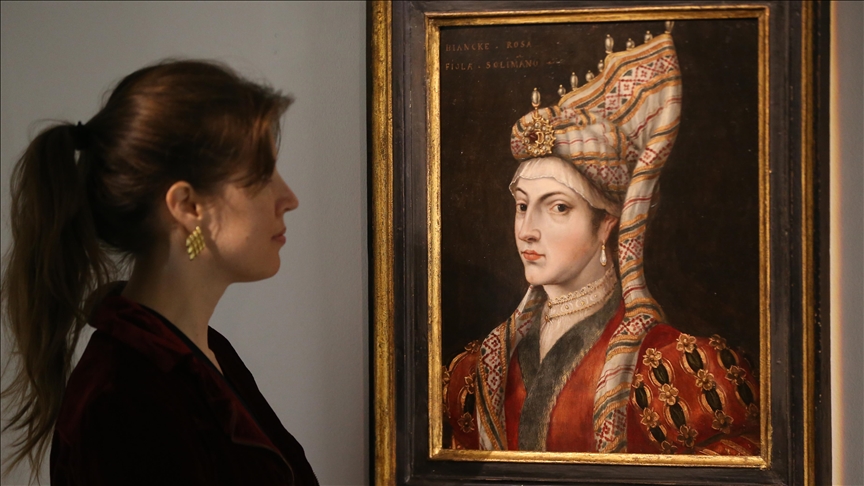Hurrem Sultan, often referred to as Roxelana, was a woman who played an instrumental role in the Ottoman Empire during the 16th century. Her life is not just a tale of intrigue, beauty, and power but also highlights the complex socio-political landscape of her time. Born in the region that is now Ukraine, she caught the eye of Sultan Suleiman the Magnificent and ultimately became his favorite consort, later transitioning into his legal wife. Her story evokes tales of love and ambition, encapsulating her rise from humble beginnings to the heights of imperial authority.
The Historical Context of Hurrem Sultan's Life

To truly appreciate the narrative of Hurrem Sultan, we must delve into the historical context of her life. The 16th century was a transformative era for the Ottoman Empire, marked by political, cultural, and territorial expansion. At the helm was Sultan Suleiman I, known as "Suleiman the Magnificent," who reigned from 1520 to 1566. During his reign, the empire reached its zenith, becoming a dominant force in Europe, Asia, and Africa.
Key Historical Factors in Hurrem Sultan's Era:
- Militaristic Expansion: The Ottomans were involved in numerous military campaigns, extending their territory well into Europe.
- Legal Reforms: Suleiman enacted significant legal reforms, earning him the title "Lawgiver." These reforms affected everything from taxation to criminal law.
- Cultural Renaissance: This era also saw a flourishing of arts and architecture, with the construction of grand mosques and palaces, including the famous Süleymaniye Mosque.
- Role of Women: Women in the Ottoman court wielded a degree of power that was unique for their time, influencing political decision-making at various levels.
In this milieu, Hurrem Sultan's rise to prominence was not just remarkable but also indicative of shifting paradigms regarding gender and power. As a woman who ascended to the position of the sultan's wife, she broke conventions and set a unique precedent in the male-dominated world of the Ottoman court, all while navigating through layers of intrigue and rivalry.
Details Surrounding Her Death

Hurrem Sultan, the influential wife of Sultan Suleiman the Magnificent, passed away in 1558, leaving behind a legacy that would echo through history. The exact circumstances of her death are shrouded in a mix of historical facts and folklore, making her passing a subject of intrigue.
It is widely reported that Hurrem Sultan suffered from illness in her later years, particularly with a kidney ailment, which contributed to her declining health. Despite the rigorous medical attention she received, her condition worsened. There are several accounts from historians of the time that suggest she displayed great strength even in her last days, continuing to influence matters of state and family even as her health deteriorated.
Some sources suggest that her death occurred in the Topkapi Palace, a central location that was significant to her status and influence. The emotional weight of her death resonated with those who knew her, particularly Suleiman, who is said to have been deeply affected by her passing. His sorrow was palpable, as she was not only his wife but also a trusted adviser and confidante.
Her funeral was a grand affair, befitting her status as a queen. She was laid to rest in the Suleymaniye Mosque complex in Istanbul, which was designed by the famed architect Mimar Sinan and holds significant historical and architectural importance. The ceremony was attended by numerous dignitaries, showcasing the impact she had on both the Ottoman court and the broader realm.
Cultural Impact of Hurrem Sultan's Death
The death of Hurrem Sultan sent ripples throughout Ottoman society and beyond, marking the end of an era characterized by her remarkable influence. Her life and legacy continue to inspire numerous works of art, literature, and even modern television series, highlighting her pivotal role in history.
Her demise is often regarded as a turning point in the dynamics of power within the Ottoman Empire. Demands for political stability grew, leading to a shift in how women were perceived in positions of influence. Hurrem's story captivates people because it challenges the conventional image of women in her time. She was more than just a sultan's consort; she was a capable political player.
*Cultural Influence:
- Literature: Several novels and articles have been published that romanticize her life, portraying her as a figure of empowerment.
- Television: Series like "Muhteşem Yüzyıl" (Magnificent Century) have claimed large audiences, showcasing her life and influence, bringing her story to a new generation.
- Art:* Various artworks have been created posthumously that depict her dynamic personality and beauty, infusing her image into cultural imagination.
In many ways, Hurrem Sultan's death marked not only the end of her individual impact but also a shift in the narrative around women in power within the Ottoman sphere. She remains a symbol of resilience and influence, inspiring generations to come.
Legacy of Hurrem Sultan in Modern Media
Hurrem Sultan, the influential wife of Suleiman the Magnificent, has left an enduring mark not only on history but also on modern media. Her captivating story has intrigued writers, filmmakers, and television producers, leading to various portrayals that blend historical fact with creative interpretation.
In the realm of television, the Turkish series "Muhteşem Yüzyıl" (Magnificent Century) brought Hurrem Sultan's dramatic life to a global audience. Portrayed by the talented Meryem Uzerli, Hurrem is depicted as a powerful and ambitious woman who navigates the treacherous waters of the Ottoman imperial court. This show sparked immense interest in Hurrem's character, showcasing her as both a political strategist and a devoted mother. The show resulted in increased tourism to Turkey, with fans eager to explore the historical sites that played a part in her life.
- Literature: Several historical novels have been written about Hurrem Sultan, depicting her as an enigmatic figure of strength and resilience.
- Documentaries: Various documentaries explore her life and contributions to the Ottoman Empire, highlighting her influence on art, architecture, and culture.
- Theatre: Stage plays often dramatize her life, bringing her story to life through powerful performances that captivate audiences.
In today's culture, Hurrem Sultan symbolizes the intersection of femininity and power. She serves as a reminder that women throughout history have played pivotal roles, even when faced with societal constraints. As we contemplate her legacy, it becomes clear that Hurrem Sultan’s story continues to resonate across generations, inspiring discussions about women's rights, ambition, and leadership.
Conclusion and Reflection on Her Life
Reflecting on the life of Hurrem Sultan offers a fascinating glimpse into a woman who transcended her time. Born as Roxelana in what is now Ukraine, her journey from a humble background to the heights of the Ottoman court showcases an extraordinary tale of resilience and ambition.
Hurrem Sultan is often remembered for various aspects of her life: as a loving mother, a powerful wife, and a cunning political player. She influenced the politics of the empire, especially through her son, Selim II, and her unwavering support and counsel to Suleiman. Her legacy is not merely defined by her marriage to the Sultan but also by her strategic thinking and philanthropic endeavors.
In conclusion, while history may be written by the victors, Hurrem's life reminds us that every story is multi-faceted. She navigated the complexities of palace politics with finesse and left behind a legacy that urges us to reconsider the roles women have played throughout history. Her narrative shines a light on the possibilities of female empowerment, showcasing how one woman can impact the world in profound ways.
As we explore her life, we are also invited to reflect on contemporary issues surrounding gender, power, and representation, making Hurrem Sultan’s story relevant even today. In that sense, her spirit lives on, challenging us to look deeper into the narratives of women who have shaped history.










